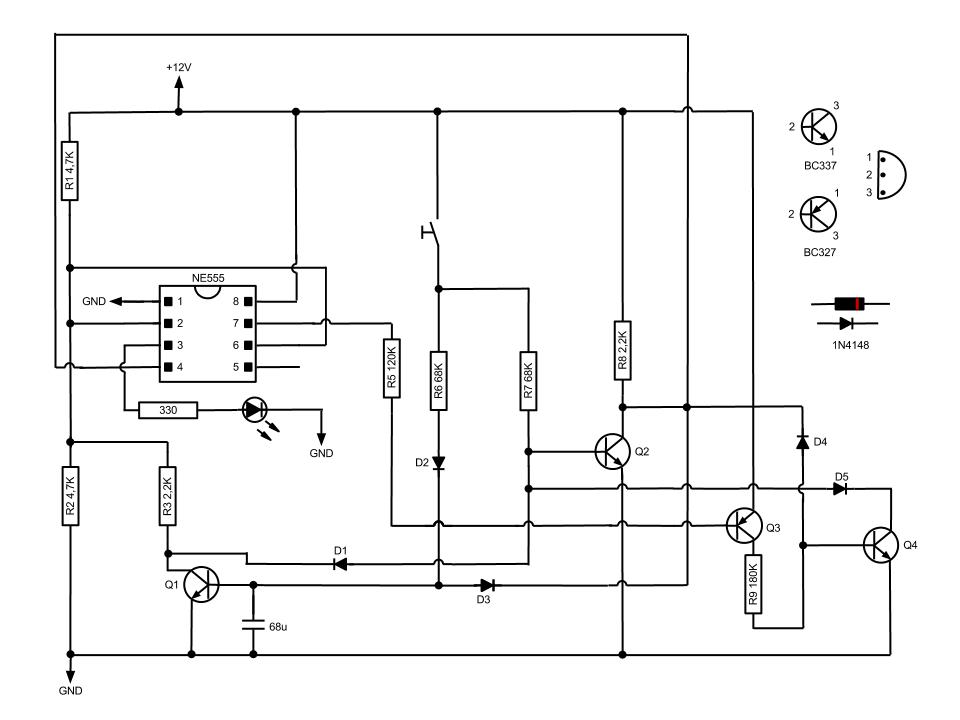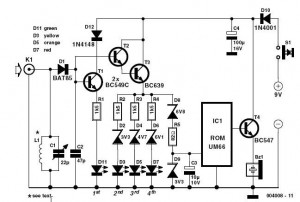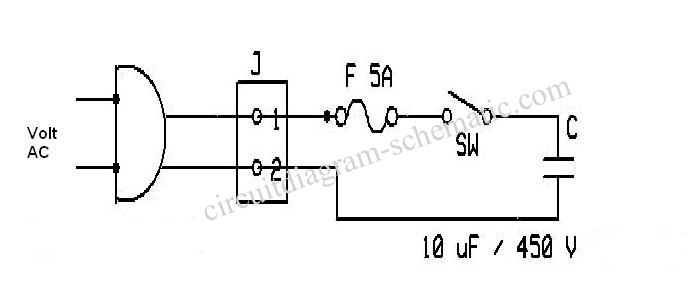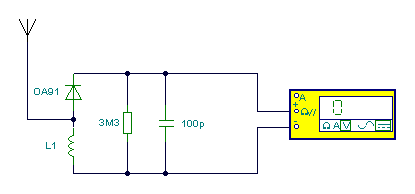
Simple Momentary Switch with 555

This circuit, based on the NE555 timer IC, toggles the output on and off using a momentary switch. It functions similarly to a mechanical latching relay but resets to its initial state when the power supply is turned off. This feature is particularly useful in automotive applications. No relay contacts are utilized; instead, the output is connected to an LED. When the momentary switch is activated, the output (pin 3) remains off because pins 2 and 6 are at half voltage. Pressing the button causes Q1 to activate almost instantaneously due to the capacitor, while Q2 remains off. Activating Q1 pulls pins 2 and 6 to a low voltage, resulting in a high output. Pressing the button again activates Q2, which pulls pin 4 to a low voltage (with the aid of a pull-up resistor), returning the circuit to its initial state.
The NE555 timer is configured in a bistable mode, allowing it to toggle its output based on the state of the momentary switch. The circuit's operation begins with the momentary switch in its unpressed state, leaving the output at a low state due to the voltage levels at pins 2 and 6. When the switch is pressed, a brief pulse is generated, which is coupled through a capacitor to trigger Q1. This transistor's activation momentarily changes the voltage levels at pins 2 and 6, causing the timer's output (pin 3) to switch to a high state, illuminating the connected LED.
The role of Q2 is crucial for resetting the circuit. When the momentary switch is pressed a second time, Q2 is activated, which pulls pin 4 low. This action effectively resets the timer, allowing the circuit to return to its original state without requiring a mechanical relay. The use of a pull-up resistor on pin 4 ensures that it remains high in its default state, enabling reliable toggling behavior.
This NE555-based circuit design is particularly advantageous for automotive applications where space is limited, and the absence of mechanical components increases reliability. The use of transistors for switching reduces wear and tear compared to traditional relay systems, making this design suitable for various electronic control tasks within vehicles.Based on NE555 this circuit turns on and off the IC output by a momentary switch. In other words it works as a mechanical latching relay, but the circuit backs to the start condition when you switch off the power supply. This feature is often required in automotive devices. No relay contacts are used, infact I connected the output to a led. Once t he momentary switch circuit is supplied the output (pin 3) keeps off because pin 2 and 6 are at half voltage. When the button is pressed Q1 turns on within a fraction of second because of the capacitor, while Q2 keeps off.
By switching on Q1 leads pin 2 and 6 to low voltage, then the output gets high. When the button is pressed again Q2 switches on and leads pin 4 to low voltage (I used a pull up resistor), then the circuit takes the start condition. 🔗 External reference
The NE555 timer is configured in a bistable mode, allowing it to toggle its output based on the state of the momentary switch. The circuit's operation begins with the momentary switch in its unpressed state, leaving the output at a low state due to the voltage levels at pins 2 and 6. When the switch is pressed, a brief pulse is generated, which is coupled through a capacitor to trigger Q1. This transistor's activation momentarily changes the voltage levels at pins 2 and 6, causing the timer's output (pin 3) to switch to a high state, illuminating the connected LED.
The role of Q2 is crucial for resetting the circuit. When the momentary switch is pressed a second time, Q2 is activated, which pulls pin 4 low. This action effectively resets the timer, allowing the circuit to return to its original state without requiring a mechanical relay. The use of a pull-up resistor on pin 4 ensures that it remains high in its default state, enabling reliable toggling behavior.
This NE555-based circuit design is particularly advantageous for automotive applications where space is limited, and the absence of mechanical components increases reliability. The use of transistors for switching reduces wear and tear compared to traditional relay systems, making this design suitable for various electronic control tasks within vehicles.Based on NE555 this circuit turns on and off the IC output by a momentary switch. In other words it works as a mechanical latching relay, but the circuit backs to the start condition when you switch off the power supply. This feature is often required in automotive devices. No relay contacts are used, infact I connected the output to a led. Once t he momentary switch circuit is supplied the output (pin 3) keeps off because pin 2 and 6 are at half voltage. When the button is pressed Q1 turns on within a fraction of second because of the capacitor, while Q2 keeps off.
By switching on Q1 leads pin 2 and 6 to low voltage, then the output gets high. When the button is pressed again Q2 switches on and leads pin 4 to low voltage (I used a pull up resistor), then the circuit takes the start condition. 🔗 External reference





